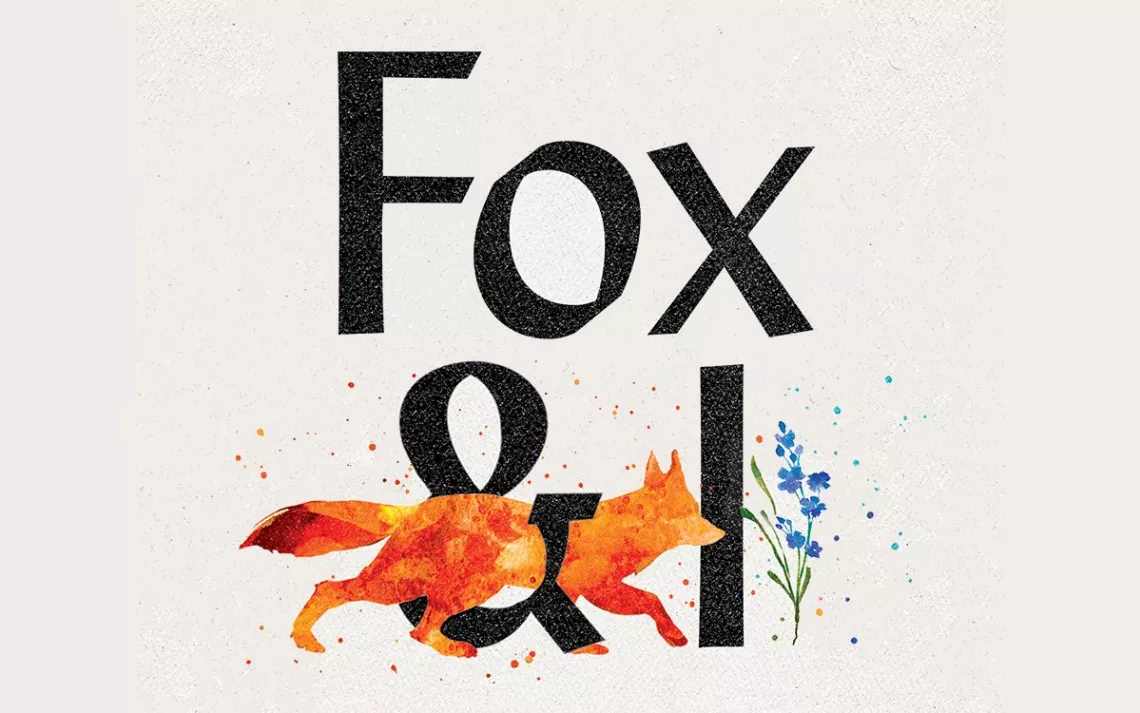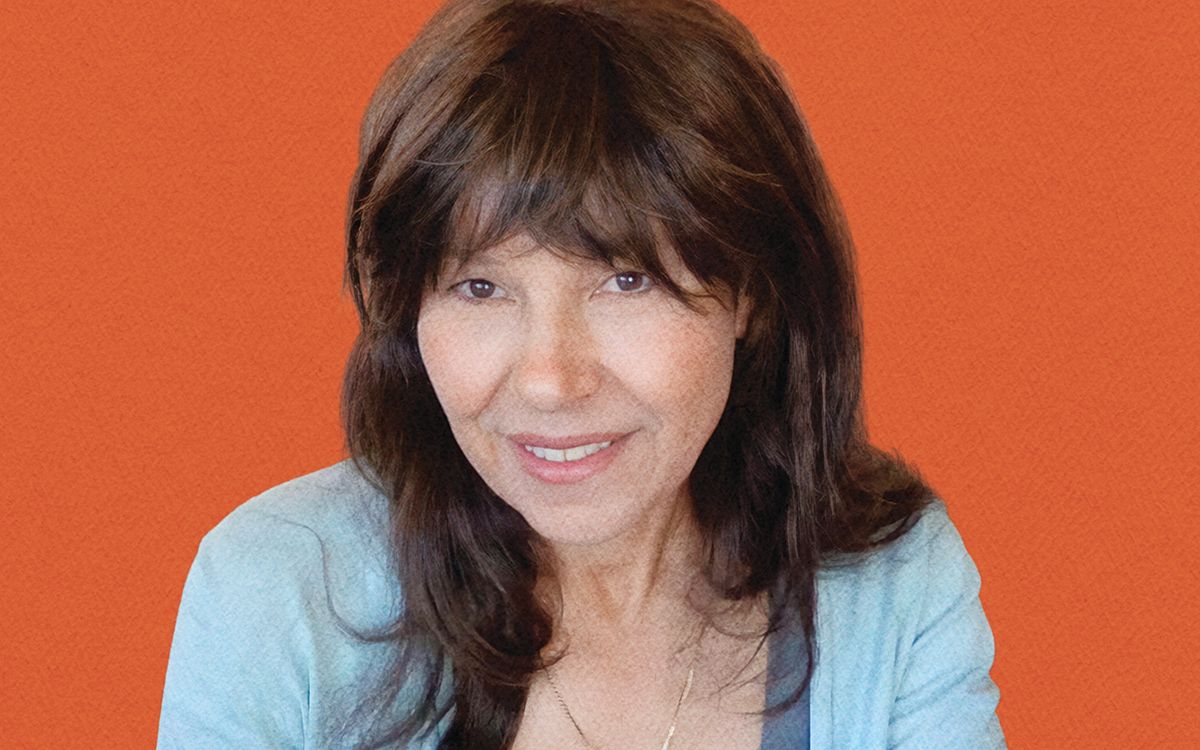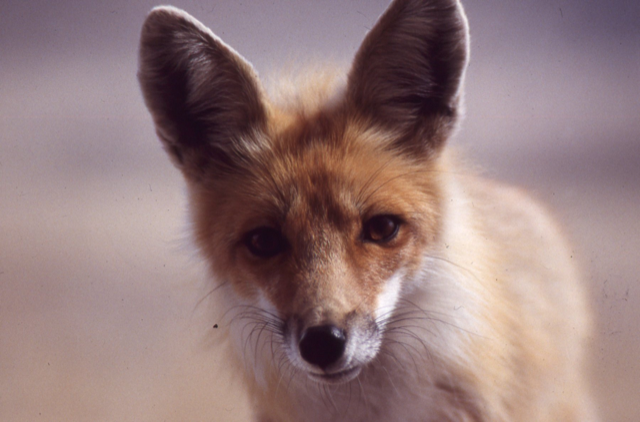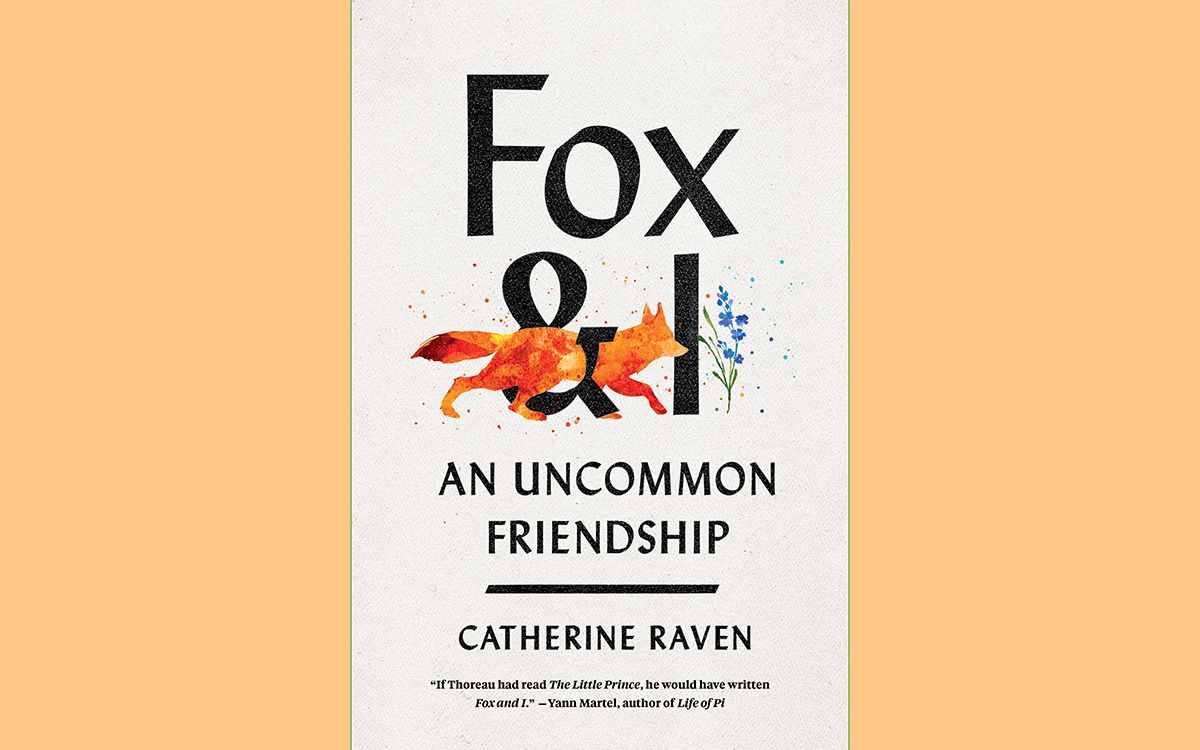Inside the Animal-Human Fellowship of “Fox & I”
Author, park ranger, and biologist Catherine Raven gets candid

Images courtesy of Spiegel & Grau
It happened the way so many of these relationships do, with a chance encounter and a seemingly friendly glance, a shared favorite sunny perch and reading ritual. But it’s important to note that in Catherine Raven’s critically celebrated memoir, out this summer from Spiegel & Grau, this was not a meeting of any two souls and minds, but rather the coming together of a woman and a fox. In Fox & I: An Uncommon Friendship, the author, a former park ranger and biologist, explores intriguing terrain: Is a friendship between a human and a wild animal ever truly possible?
 At the start of Fox & I, Raven, who grew up with parents she characterizes as “violent,” is alone in the world. Indeed, she left home at age 15 and traveled west to work as a National Park Service ranger in such parks as Glacier, Mount Rainier, and Yellowstone. She found solace in the wilderness and comfort in being alone. "A long time ago, I had arrived at the prudent and logical conclusion,” she writes, “that when your own parents don't want you, no one else will. So I had been living a solitary life.” She rarely entertained human visitors, but welcomed creatures: “Contact with a slug was all I needed to keep from feeling alone.” In the decades to come, Raven earned a PhD in biology (despite not having gotten a high school diploma) and bought an expanse of land in an isolated valley in Montana.
At the start of Fox & I, Raven, who grew up with parents she characterizes as “violent,” is alone in the world. Indeed, she left home at age 15 and traveled west to work as a National Park Service ranger in such parks as Glacier, Mount Rainier, and Yellowstone. She found solace in the wilderness and comfort in being alone. "A long time ago, I had arrived at the prudent and logical conclusion,” she writes, “that when your own parents don't want you, no one else will. So I had been living a solitary life.” She rarely entertained human visitors, but welcomed creatures: “Contact with a slug was all I needed to keep from feeling alone.” In the decades to come, Raven earned a PhD in biology (despite not having gotten a high school diploma) and bought an expanse of land in an isolated valley in Montana.
Living in a tent, she eventually built a small cottage on her property, beyond the reach of cell towers, gas lines, water, and sewage. “The physical isolation was a perfect match for my emotional isolation,” she writes. “By that, I mean that I had left the 'person to contact in case of an emergency’ spot blank for my entire life.” And then came Fox. Raven was leading field classes in nearby Yellowstone National Park when she realized that at 4:15 every afternoon, a scruffy fox was coming to her land. Her biologist’s training cautioned her not to anthropomorphize the animal, but at the same time, she wondered whether she could cultivate some kind of friendship. Plopping down in a camp chair, she began to read to Fox from Antoine Saint-Exupéry’s The Little Prince. Raven would read a page and then pause in silence for 15 seconds—space and time for Fox to think and “respond.”
There were surprises: The pair hiked together and played games. She caught Fox peering through her windows, looking for her. At one point, Raven feared that Fox had died. Ultimately she was mistaken, but concerned, she went to search his den: “I expected to find remnants from a short, staid life. Instead, a wonderland of natural art objects greeted me, funnily arranged as if to be aesthetically pleasing. They whispered stories to me under cloud-covered sky: segmented deer vertebrae, a garter snake’s shed skin, grouse feathers spraying from the base of dried yarrow, and green-tinged lacunae mottling an elk’s scapula. A large trophy, the elk’s scapula suggested that the den was a hunter’s home, one whose life, though short, was not without glory.”
She also discovered he had collected little treasures from her house: “A plastic seedling tub, a shard of pottery with part of a blue donkey’s face. I was less sad when I convinced myself that he had staged his memorabilia with a little bit of whimsy, creating a place where he enjoyed spending time. Maybe he liked the way those objects looked. Maybe he liked the way it felt to be around them.”
Throughout her memoir, Raven explores the ways in which her friendship with Fox changed her life: “Before Fox, I was too timid, distrustful, and embarrassed to get close to people; I wanted to be invisible. My relationship with Fox left me with the courage and self-esteem to seek out and build friendships with people. Over time pets become like their owners. Over time, I had become more like the fox.”
Raven spoke with Sierra about life after Fox, and about how people can develop a more positive place in the natural world, support wildlife, and forge better relationships with other species.
***
Sierra: Having had this wonderful and surprising relationship with Fox, in which ways do you think we belong to wild animals? How do they belong to us humans?
Catherine Raven: While writing Fox & I, I discovered that it mostly wasn’t practical to divide the animals sharing my land according to whether they were human or wild. So instead of “humans” and “wild animals,” I considered that all animals, including humans, could be either domestic or wild. Some humans would fall into one category, some the other. These categories were especially convenient when I wrote about feral cats. In every altercation, readers will notice that Fox and I are on one team, feral cats on the other.
Anytime I’m thinking about categories, Venn diagrams appear in my mind and refuse to leave. Domestic and wild are not permanent labels, but dynamic circles that are bouncing into and overlapping each other. They’ll keep moving while we discover more ways that we are like other animals and more ways that they are like us. Fox and other animals that live on my land are as much the keepers as I am. We’re neighbors sharing territory. I have completely internalized the feeling that I am part of their social group, and we share responsibility and resources. As a result, I owe them respect, I share as much as I can, and I keep few secrets.
 What do you believe is the essential problem with anthropomorphizing wild animals; in your case, Fox? How can one avoid doing so?
What do you believe is the essential problem with anthropomorphizing wild animals; in your case, Fox? How can one avoid doing so?
The essential problem was being respectful to Fox. This meant making a great deal of effort to understand him and fairly represent him. I don’t appreciate people pretending or claiming to understand me; I appreciate people who try to understand my feelings by studying and observing me. I did the same with Fox and the magpies and the other animals in my community. A tremendous amount of observation informed my understanding of Fox’s personality. Almost every day, I watched him for hours. This went on for years. I compared his behavior with that of other foxes that I’d observed. For example, Fox loved sunbathing, yet the generic red fox is crepuscular or nocturnal. I also read primary scientific literature to compare his behavior with that of other carnivores. If anthropomorphizing means giving human traits to non-human animals, then the only way to avoid it is to know exactly which personality traits belong strictly to humans. But we don’t know. Well, I don’t know, anyway. So, by that definition, I can’t avoid anthropomorphizing.
How was your relationship with and conception of nature and humans' role in it influenced by your friendship with Fox?
I think most of us have gotten in the habit of referring to nature as Mother Nature. I have no image of what that looks like, which meant nature wasn’t a solid concept for me. Nature was a fuzzy meaningless word that I couldn’t work with. Now I have this amazing and enlightening image in my mind. When I say the word “nature,” I see a landscape with water and sky and all the living things in it. Nature is a community. I’m part of that community and have responsibilities and privileges. Our role as humans should be based on the understanding that we’re not the most important species even if we happen to be the most impactful at the current time. I believe our species is likely to predecease our planet. Earth was here billions of years before us. Why wouldn’t it be here after we are gone? I minimize the negative effect I have on my community by managing the plants and the water and by restricting the noise I make and the space I take up. Maybe this seems like a tiny thing, but I’m proud that I never use electric lights outside after dark. Our role as humans should be influenced by the most important thing that separates me from Fox: hands. We need to use those hands to do what we can to help all animals have a better life.
What are you hoping environmentally engaged/concerned readers take away from your story?
Like St Exupéry’s little prince, I take care of my own little piece of earth. I’m diligent and earnest about it. I hope readers will be inspired to do the same with their own grounds, whether it’s a little speck of dirt or enough to make a provincial land baron gasp. The personal responsibility of land management is a major theme in Fox & I. Maybe readers who have no place of their own can knock on someone’s door. A neighbor might need help planting a tree so they can crank off their air conditioner, or maybe they need help identifying the birds at the feeder. Books matter. They matter forever, and they always will because kids, like all animals, don’t choose their nestmates or their parents. They have some chance to choose, in the school library, their books. This way they can meet people who live far away in time and space. Of course, open land and space and herbariums matter for children, and I hope we will have more of them someday and that they are widely accessible. But right now, accessibility is down to parents.
How might we collectively forge a better relationship with other species moving forward?
Empathy is a useful skill to practice. I remind myself to avoid generalizing about an animal based on his species. And of course, I hope all readers will take Chapter 8 quite seriously and read it before their next trip to a national park. Wild animals are more than objects scattered about for us to enjoy and photograph. They are living creatures who experience pain, fear, hunger. Because Fox & I has allowed me to meet editors and translators from around the world, I’ve learned that Sweden has impressive laws designed to defend and forge better relationships with non-human animals. Because I spend so much time watching other animals and so little time with other people or in towns (I’ve left my home once in the last 23 days and haven’t had any visitors), I understand that we humans are too numerous and over-bearing. When we move into an area, artificial lights arrive and the setting gets louder, more metallic, probably hotter, and certainly more dangerous. One thing I do to forge a better relationship with other species is this: I stop my car and move dead animals off the road where they won’t be viewed. I find it disrespectful to leave them exposed. I have tried very hard to convince myself that they are “just animals.” I cannot because my mind doesn’t separate mutilated bodies into human and non-human.
How can humans provide more support for wild animals?
Decrease the human population and increase the acreage of wild land. I expect that decreasing the human population will mitigate climate change. I also believe that any attempt to mitigate climate change without a concomitant decrease in the human population will be futile. We are all keepers of the land. We should know where the water we’re using comes from and to whom it is distributed. Water is a limited resource, and we share it with wild animals. We are also responsible for mitigating human-caused wildfires. Too many fires are killing too many animals, and most of these fires are human-caused.
What’s your daily life like now? How does your friendship with Fox manifest in meaningful ways today, and what was the biggest takeaway from this friendship?
My life hasn’t changed much, but my feelings about myself have changed. I’m outside soon after dawn to see who’s around and if anyone needs me— plant or animal. My sleep schedule maximizes natural light so that I don’t waste electricity. I don’t have an air conditioner or a fan, and we’ve had days 30 degrees above normal this summer, so I sleep with all the windows and the two upstairs doors open, and then shut everything and draw the shades in the morning. During the heat of the day, I work downstairs where it’s cooler. Mostly I move my workstation around the house during the day to make use of natural light. I have “land baron” chores every day. This week, I’m pulling and replacing cheatgrass (Bromus tectorum). It’s a fire hazard, and it’s wiping out the native plants that most animals need for food. Worse still, cheat creates a very uninviting if not painful walking experience for the small and mid-sized mammals. I pull tumbleweed skeletons from the slough once a week. The task is endless because of the wind, but foxes need a safe place to walk. I have a skunk with four young ones (originally five), denning three meters beyond my back door. I spend time with her almost every day. A feral cat stalks the den in the evening when it’s too dark for hawks to be hunting and too light for owls. It should be a safe time for skunks, but the cat has already taken one skunkling. My relationship with Fox gave me self-esteem. It solidified my purpose in life and the will to achieve it. It strengthened my belief in fellowship, the family that we choose.

 The Magazine of The Sierra Club
The Magazine of The Sierra Club



